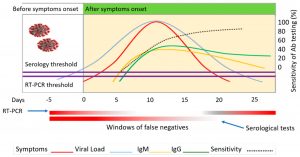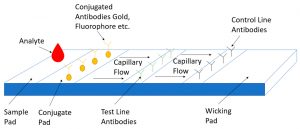

Ernst Emmanuel Etienne, Bharath Babu Nunna, Niladri Talukder, Yudong Wang, Eon Soo Lee* (2021),
Bioengineering 2021, 8(7), 98;
https://doi.org/10.3390/bioengineering8070098
Abstract
COVID-19, also known as SARS-CoV-2 is a novel, respiratory virus currently plaguing humanity. Genetically, at its core, it is a single-strand positive-sense RNA virus. It is a beta-type Coronavirus and is distinct in its structure and binding mechanism compared to other types of coronaviruses. Testing for the virus remains a challenge due to the small market available for at-home detection. Currently, there are three main types of tests for biomarker detection: viral, antigen and antibody. Reverse Transcription-Polymerase Chain Reaction (RT-PCR) remains the gold standard for viral testing. However, the lack of quantitative detection and turnaround time for results are drawbacks. This manuscript focuses on recent advances in COVID-19 detection that have lower limits of detection and faster response times than RT-PCR testing. The advancements in sensing platforms have amplified the detection levels and provided real-time results for SARS-CoV-2 spike protein detection with limits as low as 1 fg/mL in the Graphene Field Effect Transistor (FET) sensor. Additionally, using multiple biomarkers, detection levels can achieve a specificity and sensitivity level comparable to that of PCR testing. Proper biomarker selection coupled with nano sensing detection platforms are key in the widespread use of Point of Care (POC) diagnosis in COVID-19 detection.
